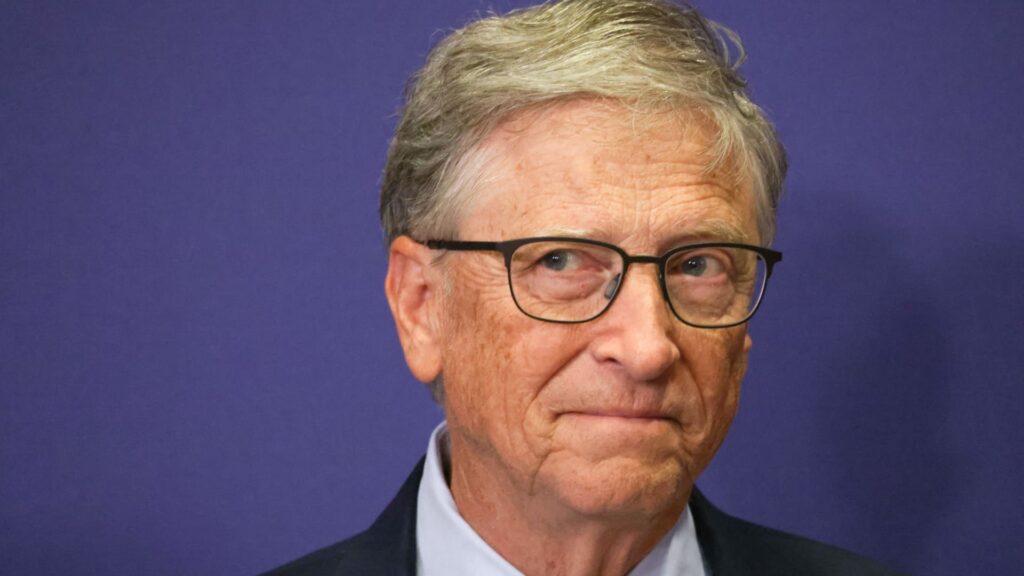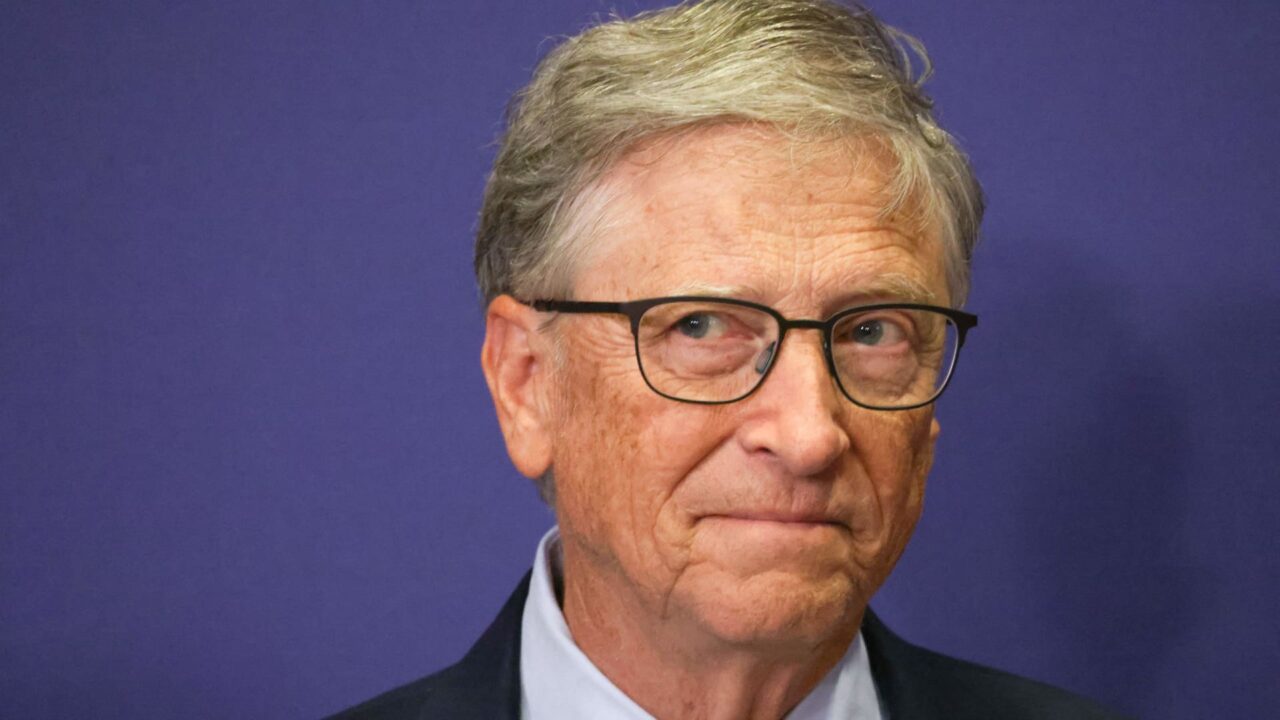
Bill Gates doubles giving to $200 billion, 'virtually all' his wealth
Bill Gates Philanthropy Pledge: Microsoft Co-Founder Doubles Giving to $200 Billion
Bill Gates announces his expanded philanthropic commitment during a press conference at the European Commission headquarters in Brussels. Image: Simon Wohlfahrt / AFP / Getty Images
In a landmark announcement that could reshape the landscape of global philanthropy, Microsoft co-founder Bill Gates has pledged to double his charitable giving to $200 billion over the next two decades, effectively committing “virtually all” of his fortune to addressing the world’s most pressing challenges. The Bill Gates philanthropy pledge, announced Thursday via his blog, represents one of the largest commitments to charitable giving in history and sets a 2045 end date for the Gates Foundation.
Table of Contents
- The $200 Billion Commitment: Details of the Announcement
- The Gates Foundation’s Evolution and Impact
- Carnegie’s Influence on Gates’ Giving Philosophy
- The Foreign Aid Crisis: Gates’ Concerns
- Gates vs. Musk: Contrasting Approaches to Wealth
- The Giving Pledge Movement: Progress and Challenges
- The Future Impact: What $200 Billion Could Accomplish
- The 2045 Foundation Closure: Planning for Legacy
- Broader Implications for Billionaire Philanthropy
- Frequently Asked Questions
The $200 Billion Commitment: Details of the Announcement
Gates, currently ranked as the world’s fifth wealthiest individual with a fortune of $168 billion according to the Bloomberg Billionaires Index, made his expanded Gates Foundation $200 billion commitment public through his personal blog. The pledge assumes his foundation’s endowment will continue to grow through investments over the coming decades, enabling this unprecedented level of giving.
“People will say a lot of things about me when I die, but I am determined that ‘he died rich’ will not be one of them,” Gates wrote in his announcement. “There are too many urgent problems to solve for me to hold onto resources that could be used to help people.”
This dramatic increase in Bill Gates charitable giving comes at a critical moment when many nonprofit organizations and universities are struggling with significant cuts to federal funding. Gates’ commitment stands out as a rare example of a billionaire substantially increasing their philanthropic contributions during this challenging funding environment.
Key Points of the Gates Commitment
- Double giving to $200 billion over the next 20 years
- Will donate “virtually all” of his personal wealth
- The Gates Foundation will close by the end of 2045
- Focus on global health, children’s wellbeing, and climate change
- Commitment made amid significant cuts to global aid by wealthy nations
The Gates Foundation’s Evolution and Impact
The Gates Foundation endowment has already established itself as one of the world’s most influential philanthropic institutions since its founding in 2000 by Bill Gates and his then-wife Melinda French Gates. Over its two-decade history, the foundation has distributed more than $100 billion to various causes, with particular emphasis on global health initiatives, educational programs, and poverty reduction efforts.
Known for its data-driven approach to philanthropy, the Gates Foundation has played pivotal roles in campaigns to eradicate polio, reduce malaria deaths, expand access to vaccines, and improve agricultural productivity in developing nations. This systematic approach to giving has helped establish new models for how large-scale philanthropy can operate effectively.
With this expanded commitment, the foundation is positioned to potentially double its lifetime impact before its planned closure in 2045. This represents a significant acceleration of the foundation’s work, which has primarily focused on methodical, long-term approaches to persistent global challenges.
| Time Period | Gates Foundation Giving | Major Focus Areas |
|---|---|---|
| 2000-2023 | Over $100 billion | Global health, education, poverty reduction |
| 2024-2045 | Projected $200 billion | Children’s health, climate change, emerging global challenges |
| Lifetime Total | Approximately $300 billion | Comprehensive global development agenda |
Carnegie’s Influence on Gates’ Giving Philosophy
In his announcement, Gates specifically cited the influence of Andrew Carnegie, the 19th-century steel magnate whose essay “The Gospel of Wealth” argued that the wealthy have a moral obligation to distribute their fortunes for the public good. Carnegie famously stated that “the man who dies rich dies disgraced,” a philosophy that clearly resonates with Gates’ current approach to his wealth.
This Gates Carnegie inspiration reflects a historical tradition of American industrial titans eventually dedicating their fortunes to philanthropic endeavors. Carnegie himself established thousands of public libraries and other institutions after selling his steel empire, setting a precedent for the conversion of business success into public benefit.
By explicitly referencing Carnegie, Gates places his giving within this historical tradition while simultaneously updating it for contemporary global challenges. The scale of Gates’ commitment, however, far exceeds what was possible even for the wealthiest industrialists of Carnegie’s era, reflecting both the massive wealth generation of the digital age and potentially a more accelerated timeline for distribution.

Bill Gates has cited Andrew Carnegie’s philosophy that “the man who dies rich dies disgraced” as inspiration for his commitment to donate virtually all his wealth.
The Foreign Aid Crisis: Gates’ Concerns
While announcing his expanded giving, Gates expressed deep concern about recent cuts to foreign aid budgets by wealthy nations, including the United States, United Kingdom, and France. These cuts, totaling tens of billions of dollars, create funding gaps that even the substantial Gates Foundation $200 billion commitment cannot fully address.
“It’s unclear whether the world’s richest countries will continue to stand up for its poorest people,” Gates wrote, highlighting a growing crisis in global development funding. This statement underscores a central tension in modern philanthropy: the question of whether private charitable giving can or should substitute for government funding of essential services and international aid.
The U.S. Agency for International Development (USAID), which was effectively shut down earlier this year, had disbursed $42.5 billion in 2023 alone—an amount that dwarfs even the largest private philanthropic efforts. According to early March estimates, these cuts would have severe consequences, including leaving approximately 1 million children with severe acute malnutrition untreated and potentially causing up to 166,000 additional deaths from malaria.
The Scale of Foreign Aid Cuts
Recent reductions in foreign aid from wealthy nations create funding gaps that significantly exceed even the largest private philanthropic commitments:
- USAID’s 2023 disbursements: $42.5 billion
- Estimated annual Gates Foundation giving: $10 billion
- Projected consequences include hundreds of thousands of preventable deaths
- Critical programs for nutrition, healthcare, and clean water face uncertain futures
- Many aid-dependent countries lack alternative funding sources
Gates vs. Musk: Contrasting Approaches to Wealth
In an interview with the Financial Times that coincided with his giving announcement, Gates directly criticized fellow billionaire Elon Musk for his role in cutting U.S. foreign aid. Musk’s so-called Department of Governmental Efficiency effectively led to the shutdown of USAID earlier this year, prompting Gates to offer a stark assessment: “The picture of the world’s richest man killing the world’s poorest children is not a pretty one.”
This Gates criticism of Musk highlights fundamentally different approaches to wealth and social responsibility among the world’s billionaires. While both men have signed the Giving Pledge, a commitment to donate the majority of their wealth, their actual giving patterns and public priorities have diverged significantly.
According to Forbes estimates, Musk has given away less than 1% of his wealth, with out-the-door giving (gifts that have been paid, not just pledged) estimated at approximately $620 million through 2023. This stands in stark contrast to Gates’ demonstrated history of giving and his expanded commitment for the future.
| Billionaire | Net Worth (approx.) | Giving to Date | Percent of Wealth Given | Philanthropic Focus |
|---|---|---|---|---|
| Bill Gates | $168 billion | $100+ billion | Has given ~59%, pledging virtually all | Global health, education, climate change |
| Elon Musk | $210+ billion | $620 million | Less than 1% | Space exploration, AI research |
| Warren Buffett | $133 billion | $51+ billion | Approximately 38% | Primarily to Gates Foundation |
| MacKenzie Scott | $36 billion | $16+ billion | Approximately 44% | Diverse nonprofits, no foundation structure |
The Giving Pledge Movement: Progress and Challenges
The Giving Pledge, founded in 2010 by Bill and Melinda Gates along with Warren Buffett, represents an effort to encourage the world’s wealthiest individuals to commit more than half their wealth to philanthropy during their lifetime or in their wills. While the initiative has attracted over 230 signatories from 28 countries, its actual impact on giving patterns has been uneven.
When asked about Musk’s commitment to the Giving Pledge, Gates expressed uncertainty: “The Giving Pledge — an unusual aspect of it that you can wait until you die and still fulfill it. So who knows? He could go on to be a great philanthropist.” This comment highlights a key limitation of the pledge: its fulfillment can be deferred indefinitely, and there is no mechanism to ensure compliance.
Gates’ decision to set a concrete timeline for distributing his wealth and closing his foundation represents a significant evolution beyond the basic Giving Pledge commitment. By establishing both a specific dollar amount ($200 billion) and a definite end date (2045), Gates is creating a more accountable model for billionaire wealth redistribution that could influence how other wealthy individuals approach their giving.
Keys to Effective Philanthropy at Scale
The Bill Gates philanthropy pledge highlights several principles for impactful giving:
- Specific commitments with clear dollar amounts and timelines
- Institutional structures that can effectively deploy resources
- Focus on systemic issues that affect millions of lives
- Complementary partnerships with governments and other organizations
- Data-driven approaches to measure and improve outcomes
- Transparent reporting on both successes and failures
- Definite closure plans to ensure complete distribution of assets
The Future Impact: What $200 Billion Could Accomplish
The scale of the Gates Foundation $200 billion commitment raises significant questions about its potential impact on global challenges. While Gates has not provided a detailed breakdown of how these funds will be allocated, the foundation’s historical focus areas offer clues about likely priorities.
Global health initiatives will likely remain central to the foundation’s work, with continued emphasis on vaccine development and distribution, infectious disease prevention, and maternal and child health. Educational initiatives, particularly in the United States, and efforts to address climate change through clean energy innovation may also receive substantial funding.
To put the scale of this commitment in perspective, $200 billion represents:
- More than the annual GDP of many countries, including New Zealand, Greece, and Portugal
- Roughly equivalent to the entire global development aid from all donor countries in a typical year
- Multiple times the annual budget of the World Health Organization ($6.7 billion in 2023)
- Enough to fully immunize every child worldwide for multiple decades
Understanding the Scale of Billionaire Philanthropy
The $200 billion Gates commitment represents unprecedented resources for addressing global challenges, but comes with important considerations:
- Even at this scale, private philanthropy cannot replace government funding for essential services
- Strategic deployment is as important as the total dollar amount
- Partnerships with existing institutions can multiply impact
- Long-term systemic change often requires policy shifts alongside financial resources
- Democratic accountability remains a challenge for large-scale private philanthropy
The 2045 Foundation Closure: Planning for Legacy
One of the most significant aspects of Gates’ announcement is the definitive end date for the Gates Foundation closing 2045. This commitment to a “sunset clause” contrasts with many major foundations that are established in perpetuity, continuing their work with a portion of their endowment’s returns indefinitely.
The decision to fully distribute all assets within a set timeframe reflects Gates’ belief that concentrating resources on current and near-future challenges is more effective than preserving capital indefinitely. It also addresses concerns about democratic accountability in philanthropy by ensuring that the foundation’s influence will not extend indefinitely beyond its founder’s lifetime.
Planning for the foundation’s closure over a 20-year horizon presents both opportunities and challenges. It allows for orderly transitions of programs to other funders or implementing organizations, while creating urgency to achieve meaningful impact within a defined timeframe. It also necessitates careful succession planning and institutional knowledge transfer to ensure that the foundation’s work concludes effectively.
Broader Implications for Billionaire Philanthropy
The expanded Bill Gates philanthropy pledge occurs amid growing debate about the role of billionaire philanthropy in addressing societal challenges. Critics argue that such concentrated philanthropic power raises questions about democratic accountability and tax policy, while supporters point to the flexibility and innovation that private philanthropy can bring to complex problems.
Gates’ approach—combining substantial giving with advocacy for continued governmental funding—represents a middle path that acknowledges both the potential and limitations of private philanthropy. By emphasizing that even his substantial commitment cannot replace government funding, Gates implicitly argues for a complementary relationship between public and private resources in addressing global challenges.
The contrast between Gates’ approach and those of some other billionaires may influence the broader conversation about wealth and responsibility. As debates continue about taxation, inequality, and the social obligations of extreme wealth, Gates’ concrete commitment establishes a clear benchmark against which other billionaires’ giving may be measured.
Frequently Asked Questions About Bill Gates’ $200 Billion Philanthropy Pledge
How does Gates plan to distribute $200 billion by 2045?
While specific allocation details haven’t been fully disclosed, the Gates Foundation will likely continue its focus on global health, education, and climate initiatives. The foundation’s existing organizational structure and partnerships will be leveraged to systematically deploy these resources over the next two decades.
What happens to the Gates Foundation after 2045?
According to Gates’ announcement, the foundation will close completely at the end of 2045 after distributing all its assets. This represents a “spend down” approach rather than establishing a perpetual institution, ensuring that all resources are deployed within a defined timeframe.
How does this commitment compare to other philanthropic giving?
This $200 billion commitment represents one of the largest philanthropic pledges in history. For comparison, the total annual charitable giving from all sources in the United States is approximately $500 billion. Most other billionaires have given significantly smaller percentages of their wealth to charitable causes.
Will this giving impact Gates’ wealth ranking?
As Gates distributes his fortune, his wealth ranking will likely decline over time. Currently the world’s fifth richest person with $168 billion, Gates has indicated that this giving will encompass “virtually all” his wealth, suggesting he intends to drop significantly in wealth rankings over the next two decades.
What is Melinda French Gates’ role in this expanded commitment?
Melinda French Gates stepped down from the Gates Foundation in May 2024 to pursue her own philanthropic work with a $12.5 billion grant. While she was a co-founder of the foundation, this expanded commitment represents Bill Gates’ individual decision about his personal wealth.
The Bill Gates philanthropy pledge of $200 billion represents a landmark moment in the history of charitable giving and establishes a new standard for billionaire philanthropy. By combining a specific dollar commitment with a defined timeline and closure date, Gates has created a model of accountability that may influence how other wealthy individuals approach their giving in the coming decades.
As the Gates Foundation works to deploy these unprecedented resources, its effectiveness will be judged not only by the scale of its giving but by its ability to forge partnerships, catalyze additional resources, and achieve meaningful, measurable improvements in the lives of the world’s most vulnerable populations. The next two decades will reveal whether this historic commitment can fulfill its potential to transform global health, education, and climate resilience.






